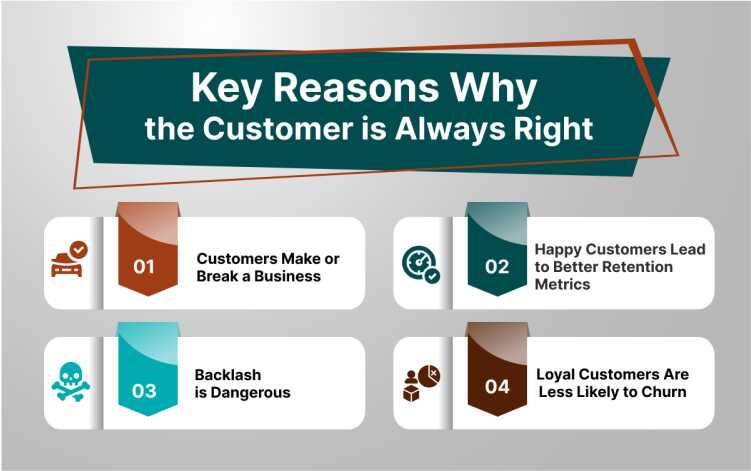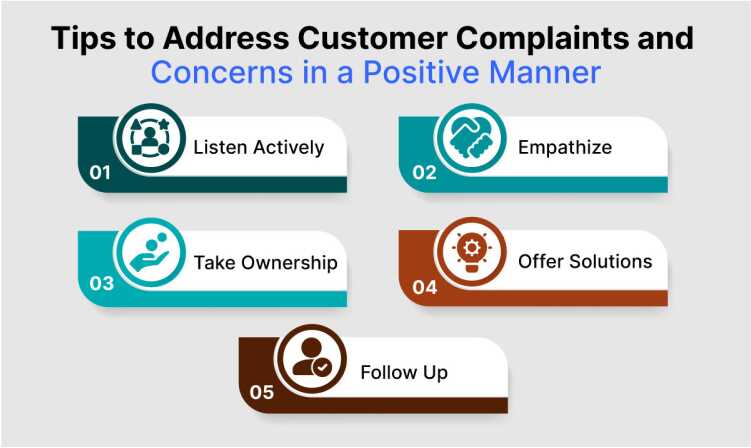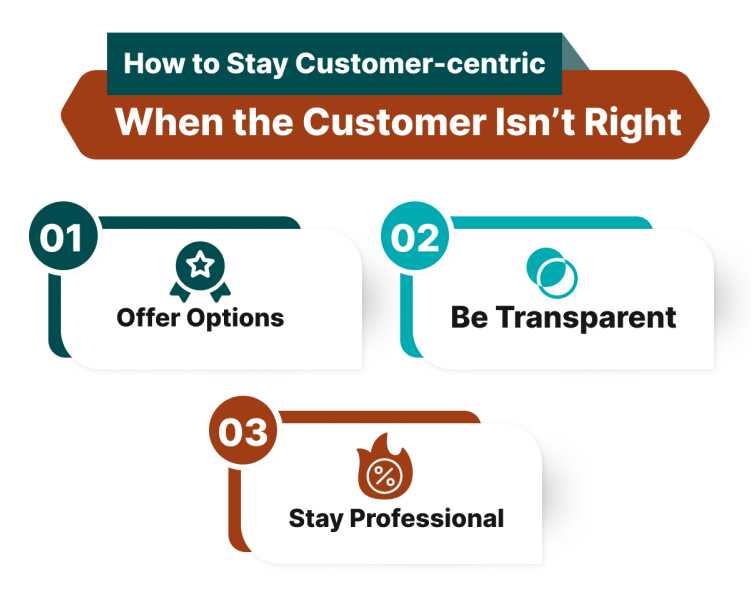Is the Customer Always Right or They Can Be Wrong Too?
- February 19, 2023
- 10 mins read
- Listen

4 Reasons Why the Customer is Always Right
The reason behind the idea that “the customer is always right” is to ensure customer satisfaction and loyalty. By treating customers with respect, listening to their needs and concerns, and going above and beyond to meet their expectations, businesses can create a positive customer experience. It leads to repeat business and positive word-of-mouth recommendations. Additionally, putting the customer first can help businesses identify areas for improvement and make necessary changes to their products or services.Let’s find the main reasons why the customer is always right. –
It leads to repeat business and positive word-of-mouth recommendations. Additionally, putting the customer first can help businesses identify areas for improvement and make necessary changes to their products or services.Let’s find the main reasons why the customer is always right. – 1. Customers Make or Break a Business
Customers are the lifeblood of any business. They determine the success or failure of a company by their buying behavior and loyalty. Satisfied customers not only bring repeat business, but they also act as ambassadors for a company by recommending it to others. On the other hand, unhappy customers can damage a company’s reputation and lead to a decline in business.Therefore, it’s crucial for businesses to focus on providingexcellent customer service and building strong relationships with their customers. This can be done by offering high-quality products and services, being responsive to customer needs and concerns, and providing a positive customer experience. By putting the customer first, businesses can create a loyal customer base that will help drive their success in the long term.Here are some tips to help make customers happy:- Listen to their needs and concerns: Take the time to listen to what your customers are saying, and respond to their needs and concerns in a timely and helpful manner. This shows that you value their business and are committed to meeting their needs.
- Provide excellent customer service: Make sure that your customer service team is well-trained, friendly, and knowledgeable. This will ensure that customers feel valued and appreciated when they interact with your company.
- Offer high-quality products and services: Customers want to feel like they’re getting value for their money. By offering high-quality products and services, you can help build customer loyalty and increase repeat business.
2. Happy Customers Lead to Better Retention Metrics
Happy customers are more likely to remain loyal to a brand and continue doing business with them. Besides, satisfied customers are less likely to switch to a competitor and are more likely to recommend the brand to others. This leads to better retention metrics, such as customer retention rates, repeat purchase rates, and customer lifetime value.In addition, happy customers are also more likely to provide positive reviews and feedback, which can help to improve the brand’s reputation and attract new customers. A positive customer experience can lead to increased customer satisfaction, which in turn can drive business growth and success.Therefore, it is important for businesses to focus on providing excellent customer service and creating a positive customer experience in order to improve retention metrics and drive long-term success.3. Backlash is Dangerous
Customer backlash can be extremely damaging to a brand’s reputation and bottom line. When customers are unhappy with a product or service, they may share their negative experiences with others, either through word of mouth or social media. This can lead to a decline in brand reputation and a decrease in customer loyalty. Moreover, customer backlash can also lead to a decrease in sales as potential customers may avoid the brand due to negative reviews and feedback. Additionally, it can also result in costly lawsuits and damage to the brand’s image and reputation.Therefore, it is important for businesses to address customer complaints and concerns in a timely and effective manner, and to work to resolve any issues that may arise. By doing so, businesses can prevent customer backlash and maintain a positive relationship with their customers.Here are some tips for addressing customer complaints and concerns in a positive manner:
Moreover, customer backlash can also lead to a decrease in sales as potential customers may avoid the brand due to negative reviews and feedback. Additionally, it can also result in costly lawsuits and damage to the brand’s image and reputation.Therefore, it is important for businesses to address customer complaints and concerns in a timely and effective manner, and to work to resolve any issues that may arise. By doing so, businesses can prevent customer backlash and maintain a positive relationship with their customers.Here are some tips for addressing customer complaints and concerns in a positive manner:- Listen actively: Let the customer fully express their concerns, and listen to what they have to say without interrupting. This shows that you value their opinions and are taking their concerns seriously.
- Empathize: Acknowledge the customer’s feelings and show that you understand their perspective. This helps to build rapport and makes the customer feel heard and valued.
- Take ownership: Accept responsibility for the situation, even if it is not entirely your fault. This demonstrates that you are committed to finding a resolution and takes the focus off of blame.
- Offer solutions: Provide a specific and practical solution to the problem, and make sure that the customer understands the steps that will be taken to resolve the issue.
- Follow up: After the issue has been resolved, follow up with the customer to make sure that they are satisfied with the outcome. This shows that you are committed to providing excellent customer service and care about their experience.
4. Loyal Customers Are Less Likely to Churn
Loyal customers are more likely to remain customers for a longer period of time and are less likely to switch to a competitor. This is because they have a stronger emotional connection to the brand and have formed a sense of trust with it. They may also receive more benefits or special offers as a result of their loyalty, making it even less likely that they would switch.It’s important for companies to prioritizecustomer retentionand loyalty, as acquiring new customers can be much more expensive than retaining existing ones. Additionally, loyal customers can also serve as brand ambassadors, helping to spread positive word of mouth about the company and attracting new customers.Here are some tips to help increase customer loyalty:- Provide excellent customer service: Respond to customer inquiries promptly, address any concerns they may have, and make the customer feel valued.
- Personalize the customer experience: Use customer data to create a personalized experience, such as recommending products or offering special promotions based on their past purchases.
- Create a loyalty program: Offer incentives for customers who make repeat purchases, such as rewards points or exclusive offers.
- Solicit customer feedback: Ask customers for their opinions and suggestions, and use this feedback to improve the customer experience.
Effective Ways to Stay Customer-centric When the Customer Isn’t Always Right
Staying customer-centric is important even when the customer isn’t right because it helps build strong and long-lasting relationships with customers. It also demonstrates your company’s commitment to delivering a high level of customer service and creates a positive brand image. Additionally, when you approach customer complaints or issues with a customer-centric mindset, you’re more likely to find a mutually beneficial solution that meets both the customer’s needs and your business goals. This can lead to increased customer loyalty, positive word-of-mouth referrals, and ultimately, business growth. Finally, prioritizing the customer experience and showing empathy and respect, even when the customer is wrong, can create a culture of positivity and teamwork within your organization.Here are some effective ways to stay customer-centric:
Additionally, when you approach customer complaints or issues with a customer-centric mindset, you’re more likely to find a mutually beneficial solution that meets both the customer’s needs and your business goals. This can lead to increased customer loyalty, positive word-of-mouth referrals, and ultimately, business growth. Finally, prioritizing the customer experience and showing empathy and respect, even when the customer is wrong, can create a culture of positivity and teamwork within your organization.Here are some effective ways to stay customer-centric:- Offer options: If the customer’s request or complaint isn’t feasible or reasonable, offer alternative options or solutions. This shows that you’re willing to work with the customer to find a resolution.
- Be transparent: Be transparent about company policies or limitations. If you can’t fulfill the customer’s request, explain why and offer alternatives.
- Stay professional: It’s important to remain professional, even if the customer becomes difficult or confrontational. Responding in a calm and respectful manner can help defuse the situation and show that you’re committed to finding a resolution.




